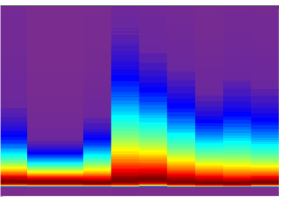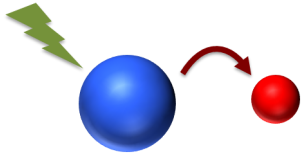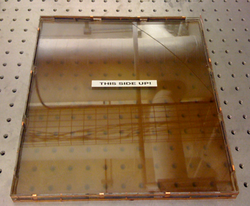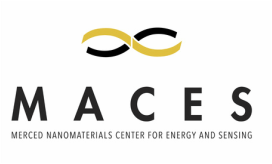Efficient harvesting and storage of solar energy is one of the most researched areas of this century. While astounding progress has been made with regards to active materials and device engineering, the solar panels in use most widely have steadfastly remained the same over the last decade, and photo conversion efficiency has not reached any where near the theoretically predicted limit. Further, the promise widespread use of photovoltaics to generate clean, renewable energy remains unfulfilled, given the practical limitations of currently available PV devices. We are working on optimizing opto-electronic and structural design of nano-structured and hybrid photovoltaic devices, and our efforts include semiconducting QDs , organic perovskite thin films and wide band-gap oxides.

Organic-inorganic perovskite based PV devices are the most sought after platforms for solar energy conversion in the field right now. These unique materials combine desirable properties of organic semiconductors (ease of processing, solution-based synthesis) with high mobility and long recombination times of inorganic semiconductors. They have demonstrated up to 20% PCE and can be made into flexible films, but they remain unstable ambient conditions. In collaboration with other groups on campus, we are investigating the fundamental properties of hybrid perovskite thin films. Our studies have brought to light several critical findings that may had to improved stability of perovskites.
Som Sarang, in preparation.
Som Sarang, in preparation.

Quantum dots (QDs) have been used for photovoltaic applications, but these have achieved only meager efficiency. QDs are very good at absorbing across a broad spectrum, but in the presence of light and oxygen, they rapidly darken. We have focused on understanding QD photo stability, and has come to realize that inter-dot energy transfer hastens the photo-degradation. We are now tailoring ligand molecules to customize the QD surfaces and tune inter-dot spacing to allow high-density packing without high energy transfer rates.
Jussi Amaral, in preparation.
Georgiy Shcherbatyuk, et.al., J. App. Phys. 2011; App. Phys. Lett. 2012; J. App. Phys. 2013.
Jussi Amaral, in preparation.
Georgiy Shcherbatyuk, et.al., J. App. Phys. 2011; App. Phys. Lett. 2012; J. App. Phys. 2013.

QDs are very efficient absorbers and bright emitters, which makes them ideal as the active media in luminescent solar concentrators ( LSCs). We have designed large planar and smaller cylindrical LSCs with PbSe QDs dispersed in PMMA. Currently, we are studying the possibility of other semiconducting materials that have higher quantum yields and lower self absorption.
Georgiy Shcherbatyuk, et al, App. Phys. Lett. 2010; Opt. Express 2011.
Georgiy Shcherbatyuk, et al, App. Phys. Lett. 2010; Opt. Express 2011.




